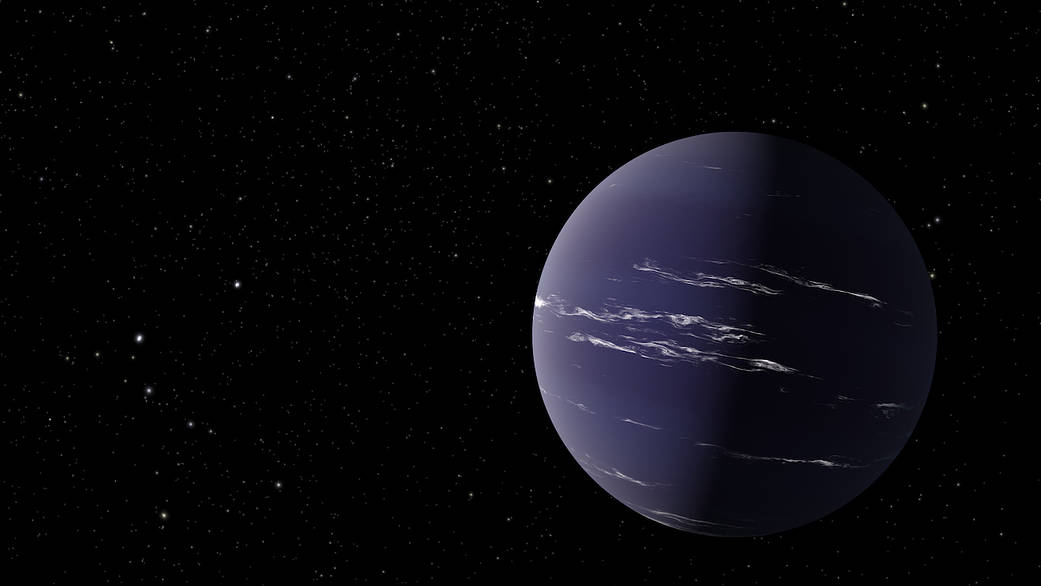Planet TOI-1231 b orbits a red dwarf star some 90 light-years away from Earth and is oddly reminiscent of our own Neptune – that is, a gaseous world with a potentially rich atmosphere, ripe for study. The planet is more than 3 ½ times as big around as Earth and warm by Earthly standards at 134 degrees Fahrenheit (57 Celsius). But astronomers say it is one of the “coolest,” comparatively small planets known to date, and in a prime position for the components of its atmosphere to be teased apart by space telescopes.
Red dwarf stars are smaller but longer lived than our own Sun – with a year, once around the star, that is 24 days long. But the planet stays relatively cool despite its close orbit because its star also is on the cooler side. Though not habitable due to its size, the planet could offer scientists one of their first chances to capture a “bar-code” type reading of the atmosphere of a temperate, Neptune-sized exoplanet – a planet orbiting another star. This will allow comparisons with similar worlds elsewhere in the galaxy, bringing potentially deep insights into the composition and formation of exoplanets and planetary systems, including our own.
Using data from Transiting Exoplanet Survey Satellite, or TESS, this exoplanet was discovered by an international team of astronomers led by Dr. Jennifer Burt, an exoplanet researcher at NASA’s JPL, and Professor Diana Dragomir, an exoplanet researcher at the University of New Mexico. The discovery was entered into our Exoplanet Archive on June 3, 2021.
Image Credit: NASA/JPL-Caltech
行星TOI-1231 b围绕着距离地球约90光年的一颗红矮星运行,奇怪的是它让人联想到我们自己的海王星——也就是说,它是一个具有潜在的丰富大气层的气态世界,研究的时机已经成熟。这颗行星的体积是地球的3.5倍以上,按照地球的标准,它的温度为134华氏度(57摄氏度)。但是天文学家说,它是迄今为止已知的“最冷”、相对较小的行星之一,而且处于一个可以用太空望远镜将其大气层的组成部分分开的最佳位置。
比我们的太阳小,但寿命更长——如果绕着恒星一周,一年就是24天。但这颗行星虽然离我们很近,但它的温度相对较低,因为它的恒星也在较冷的一侧。虽然由于这颗行星的体积大小不适合居住,但它可以为科学家提供第一个机会,捕捉到一颗温和的、海王星大小的系外行星(一颗围绕另一颗恒星运行的行星)的大气层的条形码式读数。这将使我们能够与银河系其他地方类似的世界进行比较,从而对系外行星和行星系统(包括我们自己的行星系统)的组成和形成带来潜在的深刻见解。
这颗系外行星是由NASA喷气推进实验室的系外行星研究员詹妮弗·伯特(Jennifer Burt)博士和新墨西哥大学系外行星研究员戴安娜·德拉戈米尔(Diana Dragomir)教授领导的一个国际天文学家团队利用凌日系外行星调查卫星(或称TESS)的数据发现的。这一发现在2021年6月3日被录入我们的系外行星档案。
影像来源:NASA/JPL-Caltech







